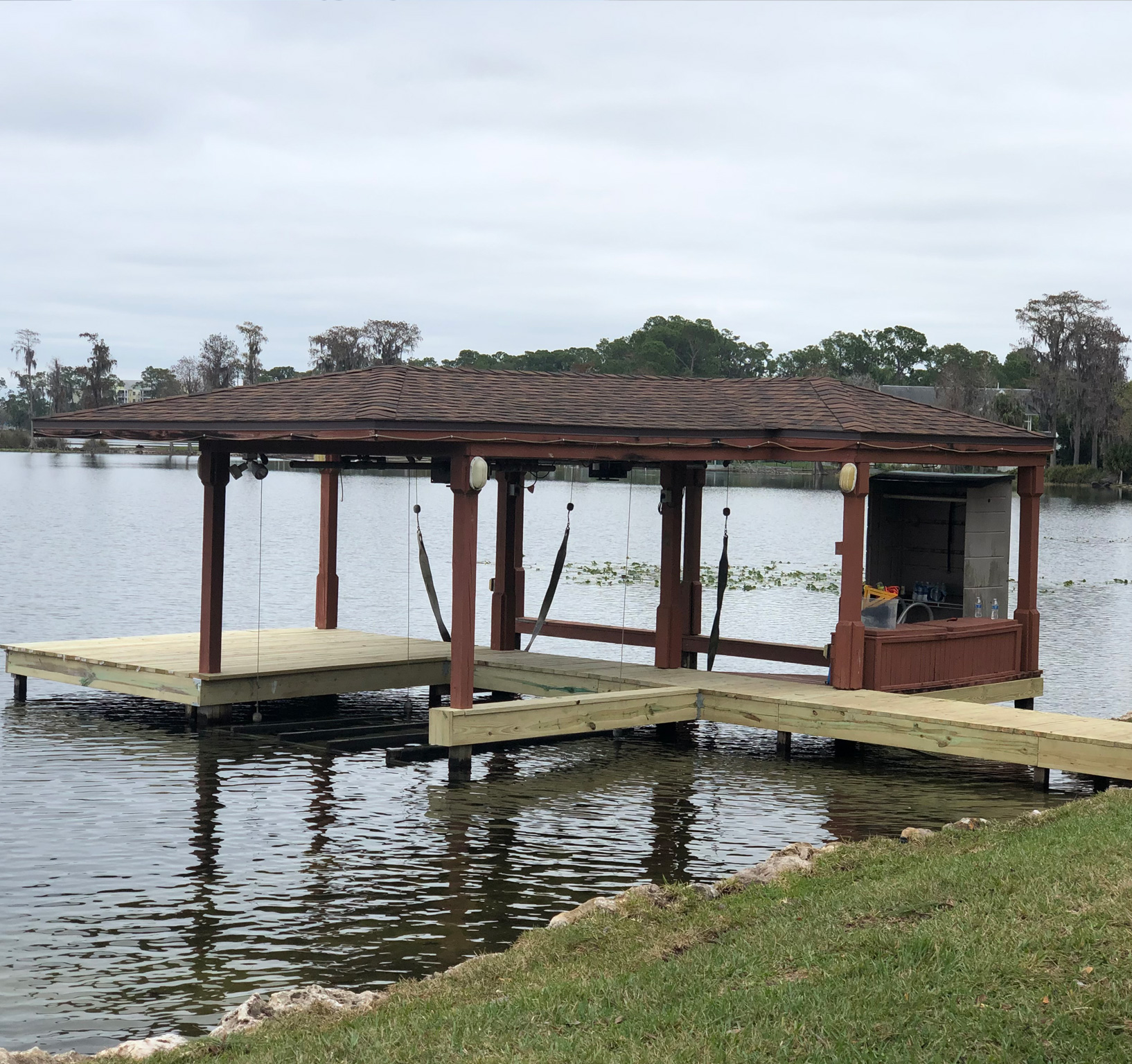Reliable Dock Fixing Techniques: Making Certain Architectural Stability
Guaranteeing the architectural integrity of docks via effective repair service techniques is vital for the long life and safety of aquatic centers. Subsequently, choosing the appropriate fixing materials, such as corrosion-resistant alloys and composite materials, is essential for resilience.
Examining Dock Damages
Evaluating dock damage is a crucial very first step in ensuring the structural integrity and security of any type of docking facility. This initial examination entails a thorough examination to determine both noticeable and concealed problems. Secret facets to check out consist of the dock's structure, pilings, outdoor decking, and equipment. Each part needs to be looked at for signs of wear, rot, deterioration, or various other types of destruction that might jeopardize the architectural stability.
Structural engineers or certified inspectors usually carry out these assessments making use of specialized methods and tools. For circumstances, undersea assessments could employ sonar equipment or remotely operated vehicles (ROVs) to detect submerged damage. Over water, visual examinations are matched by utilizing dampness meters and other analysis tools to reveal underlying problems not instantly noticeable to the naked eye.

Choosing Repair Work Materials
Choosing the appropriate fixing products is a pivotal action in the dock repair process, one that straight influences the long life and efficiency of the repaired framework. Material choice should be driven by variables such as ecological conditions, load-bearing demands, and compatibility with existing dock parts.
In addition to timber, composite products are increasingly prominent due to their sturdiness and reduced upkeep needs. Compounds, usually made from a blend of plastic and timber fibers, provide superb resistance to rot, bugs, and UV damages. For steel anchors, selecting corrosion-resistant alloys such as galvanized steel or marine-grade light weight aluminum is important to prevent rust and make certain architectural honesty in saline water conditions.
Epoxy resins and marine-grade sealers are indispensable for repairing fractures and securing joints, giving a waterproof barrier and boosting the dock's overall strength. By carefully choosing high-grade products, dock repairs can achieve lasting results, consequently safeguarding against future degradation and guaranteeing risk-free, trustworthy usage.
Architectural Support Methods
Reliable architectural reinforcement techniques are critical in ensuring the security and long life of dock fixings. This approach is especially efficient for docks revealed to heavy loads or rough environmental conditions.
Another essential strategy is the application of fiber-reinforced polymers (FRP) These materials offer high strength-to-weight proportions and outstanding resistance to corrosion, making them excellent for strengthening concrete or wood docks. FRP can be applied in strips or sheets and adhered with epoxy resins to boost structural integrity.
Supporting and anchoring systems likewise play a vital role in architectural reinforcement. Cross-bracing, using steel or wood beam of lights, can counteract lateral pressures, decreasing guiding and motion. Securing systems, such as helical piers or driven piles, give a steady structure by transferring tons to deeper, a lot more secure soil layers.
Last but not least, the integration of load-distribution straight from the source plates can aid distribute weight more uniformly throughout the dock's surface, alleviating local tension factors. These techniques collectively make certain that docks continue to be safe and robust, with the ability of standing up to the roughness of their operational atmosphere.
Advanced Fixing Methods

Another advanced strategy entails undersea welding, which enables for repair services to be carried out without the need to dewater the area. This method is particularly advantageous for addressing architectural problems in submerged dock components, ensuring marginal interruption to operations. Enhanced welding strategies, combined with robotic systems, deliver accuracy and dependability, thus extending the life-span of the dock.
Furthermore, cathodic protection systems are implemented to protect against rust in metallic dock frameworks. By utilizing sacrificial anodes or pleased current systems, these strategies properly reduce the electrochemical processes that bring about material deterioration.
Last but not least, advanced surveillance innovations, such as structural health surveillance (SHM) systems, supply real-time data on the problem of dock structures. These systems make it possible for positive maintenance and timely treatments, eventually ensuring the long-lasting architectural honesty of the dock.
Maintenance and Avoidance
Maintenance and avoidance are basic ideas that underpin the long life and security of dock frameworks. Regular examinations are critical, permitting very early discovery of deterioration, possible weaknesses, and ecological influences. A proactive technique, entailing routine checks for deterioration, rot, and structural shifts, alleviates costly repair services and lengthens the dock's operational life.
Safety nets need to include applying safety coverings to metal parts to defend against corrosion and making use of cured wood to stand up to decay. Additionally, guaranteeing correct water drainage and ventilation can stop water buildup, which is a click here for info common root cause of structural deterioration. Including top quality products and sticking to maker guidelines during construction and repair service stages additionally play vital duties in boosting toughness.

Educating workers in dock maintenance ideal methods guarantees consistent application of preventive actions. Leveraging technological advancements, such as drones for inspections and sensing units for real-time tracking, can further boost maintenance efforts. By focusing on maintenance and avoidance, dock proprietors can ensure architectural stability, functional security, and affordable monitoring over the dock's life expectancy.
Conclusion
In verdict, maintaining the structural stability of aquatic centers demands comprehensive dock repair work methods. Advanced repair service strategies, paired with regular maintenance practices, guarantee the dock stays operational and safe under diverse environmental conditions.
Ensuring the structural integrity of docks through effective repair techniques is critical for the longevity and safety of marine facilities.Choosing the proper repair service products is an essential step in the dock repair process, one that straight influences the longevity and efficiency of the fixed framework.Efficient structural reinforcement techniques are important in making sure the security and durability of dock repair work. By prioritizing upkeep and avoidance, dock owners can guarantee structural honesty, functional security, and affordable management over the dock's life-span.
In verdict, maintaining the architectural integrity of aquatic facilities necessitates thorough dock repair service methods.